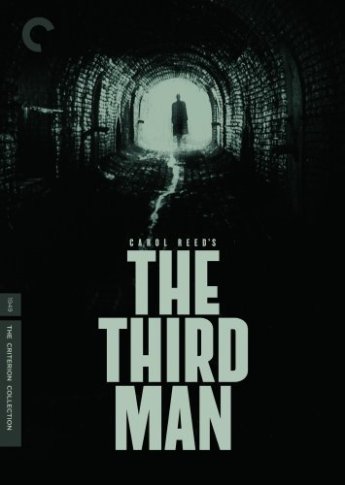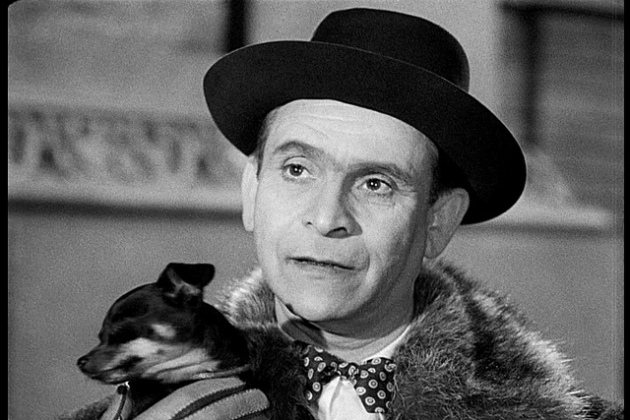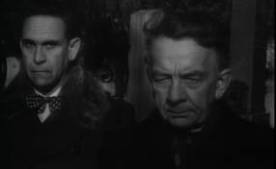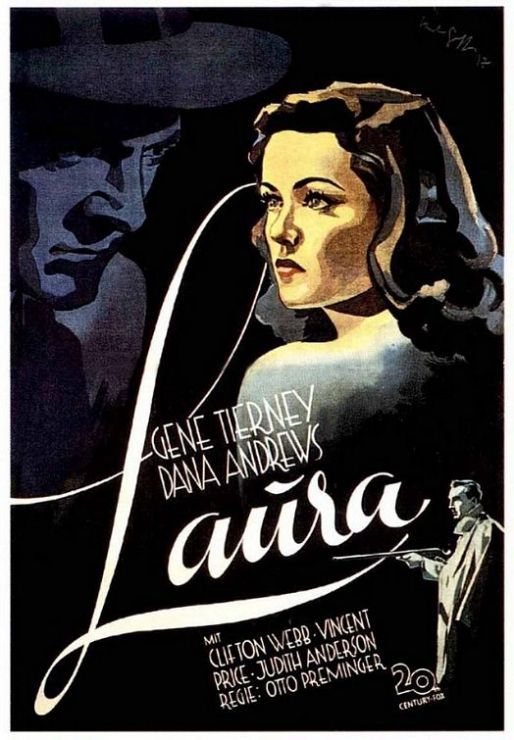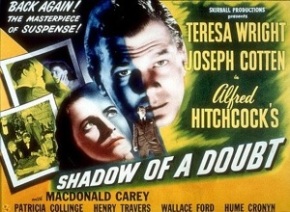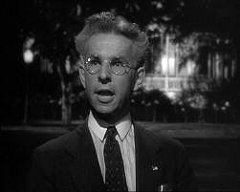“The Third Man” by Carol Reed is a film noir which heavily highlights the use of homosexuality. Throughout the film there are many moments which portray male characters as overly effeminate and presumably homosexual. These men are introduced as Holly Martins scours Vienna trying to solve the murder of his dear friend Harry Lyme. Baron Kurtz and Doctor Winkel are two characters who depict the strongest portrayal of homosexuality in the film.
The characters of Baron Kurtz and Doctor Winkel are first seen at Harry Lyme’s funeral. They are standing side by side and very close. Both are dressed somewhat feminine and look odd. Holly later meets these two personally, the first being Baron Kurtz. Holly talks with Baron to investigate what happened step by step to Harry after being hit by the car. Kurtz is wearing a very long slender jacket that is buttoned up all the way, which has fur along the neck. The coat is extremely feminine and looks like it is that of a woman’s. He is also wearing very tight leather gloves, a bowtie and is carrying a small dog. Also, the mannerisms used suggest that Kurtz is somewhat off; he doesn’t seem like someone you would trust. This scene is very relevant regarding Kurtz and Winkel because the dog that Kurtz is holding is the same dog which is later seen in Winkel’s apartment. It is implied that Kurtz and Winkel are in somewhat of a relationship.
Doctor Winkel is formally introduced when Holly decides to pay him a visit at his residence. This scene is very important in regards to Winkel’s character. The heavy use of Dutch angles on Winkel suggests that there is something wrong with him and that there is tension. Inside Winkel’s apartment it is very cluttered and filled with art, sculptures, clocks and other collectibles. This is a key identifier in film noir of someone who is homosexual. Dr. Winkel’s attitude towards Holly in this scene is very cold giving Holly only short answers in a rude manner. In this scene Dr. Winkel strokes the wick of candle while Holly is talking to him. Again this is a very odd mannerism which can be interpreted as a sexual gesture. Another strong homosexual reference in the movie is when Holly sees both Kurtz and Winkel on the balcony. Kurtz is again wearing a fur coat and gloves; he is seen standing shoulder to shoulder with Dr. Winkel. At the end of this scene when both Kurtz and Winkel retreat into the apartment, for a split second you can see Kurtz putting his arm around Winkel before the shot fades out.
“The Third Man” is a fantastic film which embodies the noir style leaving you captivated throughout the entire story. Through the use of homosexuality the film helps to displace the main character as he searches an un-known city for the facts regarding his friend’s murder. The use of homosexuality in the characters can be seen across many points in the film. Both Baron Kurtz and Dr. Winkel strongly portray homosexuality in this classic film noir.
